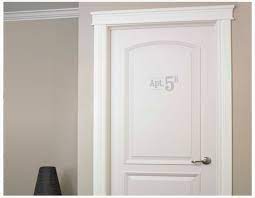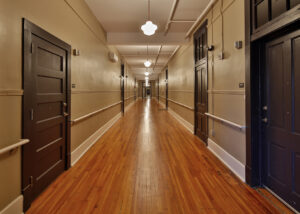 June 2023
June 2023
The door is a barrier at the entrance to a building, room or vehicle providing protection for those inside. Locks and security systems are enhancements to provide greater protection.
Each door in a high-rise community is also a life safety device. Doors are designed to withstand fire for up to 30 minutes. They protect crucial escape routes if a fire breaks out. A door with defects in it or the frame can prevent it from closing or closing properly which allows fire and smoke to spread from one space to another – such as from a unit to a hallway – which increases the risk to life and property damage.
 Unit doors should remain closed except when someone is entering or exiting. Keeping a door open for extended periods – to air out a unit including allowing cooking odours or smoke to escape to a hallway – is a hazard to all building residents. Condominium management is expected to ensure unit doors don’t remain open for extended periods as part of their basic fire safety efforts.
Unit doors should remain closed except when someone is entering or exiting. Keeping a door open for extended periods – to air out a unit including allowing cooking odours or smoke to escape to a hallway – is a hazard to all building residents. Condominium management is expected to ensure unit doors don’t remain open for extended periods as part of their basic fire safety efforts.
Doors are designed to limit smoke spread in corridors and hallways. Each corridor and hallway is required to have at least two directions of escape with more than 12 meters in length between the exits. Longer corridors and hallways may be divided in the middle third of the corridor with a wall or screen that provides at least 30 minutes of fire-resistance.
During a fire emergency, effects of a closed door include:
- Reduced smoke, temperature and fire damage in the closed room
- Increased oxygen, survivability and escape times in the closed room
- Decreased oxygen to a fire area and decreased heat release rate
- Slower fire growth
 A closed door reduces the likelihood fire or smoke will escape to a hallway or other units. Residents in other units have more time to escape a fire and reduced risk of succumbing to fire or smoke.
A closed door reduces the likelihood fire or smoke will escape to a hallway or other units. Residents in other units have more time to escape a fire and reduced risk of succumbing to fire or smoke.



